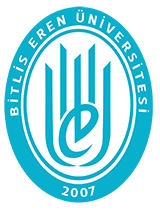Synthesis of Dimethylamine-Pyridine-Based Schiff Base Complexes of Fe(II), Co(II) and Cu(II), Structural Elucidation: Investigation of Biological Activities
View/
Date
2025-09-30Author
Turan, Nevin
İnan, Hüsna
Buldurun, Kenan
Metadata
Show full item recordAbstract
This report aims to synthesize a new Schiff base ligand (L) and its Fe(II), Co(II), and Cu(II) metal complexes, analyze their structures, and evaluate their antioxidant activities. The Schiff base was prepared through a condensation reaction between 4-(dimethylamino)benzaldehyde and 6-acetyl-2-amino-4,5,6,7-tetrahydrothieno[2,3-c]pyridine-3-carboxamide. Subsequently, complexes of the ligand with Fe(II), Co(II), and Cu(II) were designed and synthesized. The ligand and its metal complexes were characterized using a range of physicochemical and spectroscopic techniques, including elemental analysis, magnetic susceptibility measurements, 1H and 13C NMR, FTIR, UV-Vis, mass spectrometry, and thermogravimetric analysis (TGA). Based on the analytical data, the proposed molecular formulas for the Fe(II), Co(II), and Cu(II) complexes are [LFe2(H2O)6Cl3]1.5H2O, [LCo2(H2O)2Cl3]1.5H2O, and [LCu2(H2O)2Cl3]3H2O, respectively. The ligand coordinates to the metal ions through the azomethine and amine nitrogen atoms, as well as the oxygen atoms of the carbonyl group. Magnetic susceptibility and electronic spectroscopy data indicated that the Fe(II) complex adopts an octahedral geometry, while the Cu(II) and Co(II) complexes display square-planar geometries. TGA results demonstrated that all complexes have greater thermal stability than the free Schiff base ligand. Furthermore, the antioxidant activities of the synthesized compounds were evaluated using the DPPH free radical scavenging assay, the CUPRAC method for cupric ion reducing capacity, and the ABTS assay for overall antioxidant capacity. The antioxidant activities of these compounds were compared to those of standard antioxidants. The results indicated that both the ligand and its metal complexes exhibit significant antioxidant activities.
Collections

DSpace@BEU by Bitlis Eren University Institutional Repository is licensed under a Creative Commons Attribution-NonCommercial-NoDerivs 4.0 Unported License..













